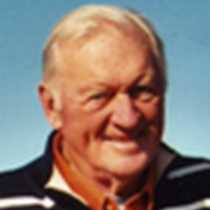Hells Canyon and The Nez Perce Country
A day-long exposure to vivid, colorful, fall temperatures throughout the southeastern valleys of Washington state and the Panhandle of Idaho brought every ramble, byway and watercourse into sharp dimension. When the jetboat departed southwards into the fabled Hells Canyon, followed by a motor coach heading up the Nez Perces (and in 1805 Lewis & Clark’s) Clearwater Valley, golden and red leaves lined the routes.
The jetboat ride revealed a veritable flotilla of sportsfishers – steelhead season at its height – and at least five sightings of bighorn sheep, including a couple of large, brown no non-nonsense rams. Guests also watched a bald eagle swoop across Hells Canyon with a fish in its talons, a mule deer swimming across the river, blue herons perch pensively on egg-shaped rocks. After driving past the mouth of the Salmon River (“River of No Return”) the jetboat captain recounted stories of sunken steamboats, abandoned copper mines, and intrepid settlers who had attempted to survive in one of nature’s least cooperative corners. During the downstream ride the jetboat stopped for clam chowder and Caesar Salad at Heller’s Bar, a snug, private lodge overlooking the Snake River.
Meanwhile, an Idaho-based Lewis & Clark expert narrated the motor coach search for exact footsteps of the Corps of Discovery. If guests were not standing in those prints today, they were within a few yards of the marks. Creeks, valley crevices, overhanging ridges, patches of wetland and actual measurements from the Journals made the sunny investigations exciting. Warm soup and a variety of cold cuts and breads were served to the L&C adventurers from a small town Idaho bakery. Learning how to start a fire without matches was on order after lunch. On the return trip L&C campsites along the Clearwater River (known as Kooskooskie – for “clear water” by the Nez Perce Indians) were pointed out, mixed with Native oral history in all its violence, bombast and exaggeration.
About 4:15 PM both groups met at the Sea Bird for a relatively quick trip to the Spalding, site of both the old (1830s-1840s) Presbyterian mission of Eliza and Henry Spalding and the nearby Nez Perce interpretive site. While driving to Spalding the ship’s historian recounted the origins of Nez Perce nationhood and commented on its changing culture; the “split” in the nation between treaty and non-treaty members; and the nation’s recent efforts to revive the breeding of their once-famous Appaloosa horse.
Sea Bird rested at the dock during the evening until 11:00 PM, allowing guests to wander among shops in Clarkston or just stroll along the bank of the Snake River.
A day-long exposure to vivid, colorful, fall temperatures throughout the southeastern valleys of Washington state and the Panhandle of Idaho brought every ramble, byway and watercourse into sharp dimension. When the jetboat departed southwards into the fabled Hells Canyon, followed by a motor coach heading up the Nez Perces (and in 1805 Lewis & Clark’s) Clearwater Valley, golden and red leaves lined the routes.
The jetboat ride revealed a veritable flotilla of sportsfishers – steelhead season at its height – and at least five sightings of bighorn sheep, including a couple of large, brown no non-nonsense rams. Guests also watched a bald eagle swoop across Hells Canyon with a fish in its talons, a mule deer swimming across the river, blue herons perch pensively on egg-shaped rocks. After driving past the mouth of the Salmon River (“River of No Return”) the jetboat captain recounted stories of sunken steamboats, abandoned copper mines, and intrepid settlers who had attempted to survive in one of nature’s least cooperative corners. During the downstream ride the jetboat stopped for clam chowder and Caesar Salad at Heller’s Bar, a snug, private lodge overlooking the Snake River.
Meanwhile, an Idaho-based Lewis & Clark expert narrated the motor coach search for exact footsteps of the Corps of Discovery. If guests were not standing in those prints today, they were within a few yards of the marks. Creeks, valley crevices, overhanging ridges, patches of wetland and actual measurements from the Journals made the sunny investigations exciting. Warm soup and a variety of cold cuts and breads were served to the L&C adventurers from a small town Idaho bakery. Learning how to start a fire without matches was on order after lunch. On the return trip L&C campsites along the Clearwater River (known as Kooskooskie – for “clear water” by the Nez Perce Indians) were pointed out, mixed with Native oral history in all its violence, bombast and exaggeration.
About 4:15 PM both groups met at the Sea Bird for a relatively quick trip to the Spalding, site of both the old (1830s-1840s) Presbyterian mission of Eliza and Henry Spalding and the nearby Nez Perce interpretive site. While driving to Spalding the ship’s historian recounted the origins of Nez Perce nationhood and commented on its changing culture; the “split” in the nation between treaty and non-treaty members; and the nation’s recent efforts to revive the breeding of their once-famous Appaloosa horse.
Sea Bird rested at the dock during the evening until 11:00 PM, allowing guests to wander among shops in Clarkston or just stroll along the bank of the Snake River.




